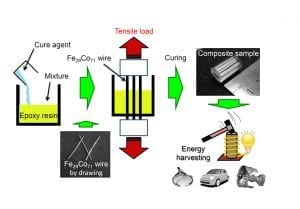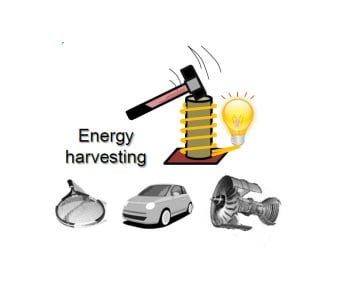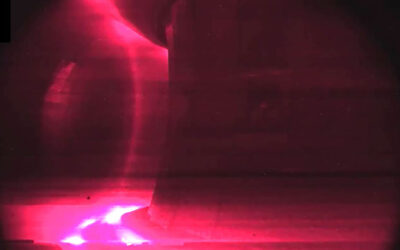 Wearable Internet of Things (IoT: physical objects embedded with sensors and actuators that enable them to collect and transfer data over a network) devices require innovatively designed electromagnetic materials and shock/vibration energy harvesting technology that is lightweight and able to withstand vigorous exercise and impact. Energy harvesting is a technology that has been receiving much attention recently as an alternative method to power wireless communication nodes. It derives energy from external sources such as vibrations and motion.
Wearable Internet of Things (IoT: physical objects embedded with sensors and actuators that enable them to collect and transfer data over a network) devices require innovatively designed electromagnetic materials and shock/vibration energy harvesting technology that is lightweight and able to withstand vigorous exercise and impact. Energy harvesting is a technology that has been receiving much attention recently as an alternative method to power wireless communication nodes. It derives energy from external sources such as vibrations and motion.
Conventionally, magnetostrictive materials such as Terfenol-D (Tb0.3Dy0.7Fe1.92) and Galfenol (Fe-Ga) have been used for sensors and actuators. However, they have drawbacks such as brittleness and difficulty in production. On the other hand, Fe-Co alloys are good candidates for energy harvesting device applications because of their abundance and lower cost compared with Terfenol-D and Galfenol. In a recent paper by Fumio Narita at the Department of Materials Processing, Tohoku University, Japan, he presents novel Fe-Co wire/polymer composite which is developed for the first time by embedding continuous Fe-Co wires in an epoxy matrix. When high stress is applied to the composite, the output voltage increases. The value obtained from tests was approximately twice as that of Galfenol. Furthermore, this novel material can be integrated into various structures, similar to carbon fiber reinforced polymer (CFRP). Its application is expected in areas such as sporting goods, automobiles, and aerospace.
Since Fe-Co can withstand high pressure and temperature, it is a promising material not only for a harvesting device but also for use in sensors and actuators in hostile environments. It opens the door for further development of lightweight, robust and efficient energy harvesting devices.

















